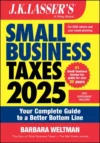5 Ways to Pay Your Tax Bill
You probably have been paying taxes throughout the year—through withholding on wages and certain other payments or with estimated taxes. However, when it comes time to file your return, you may find that your payments are less than what you owe. Here are five ways to settle up your tax bill.
1. Write a check
As has always been the option, you can write a check or money order payable to the U.S. Treasury, even though you mail it to the IRS. Be sure to include Form 1040-V, Payment Voucher, with the information required so that your payment is properly credited to your tax account. This form is used whether you file Form 1040, 1040A, or 1040-EZ. In the memo section of the check write your Social Security number (or other tax identification number), the year of the return, and the type of return (e.g., “2016 Form 1040”).
2. Use a credit or debit card
While the IRS won’t process payment on a credit or debit card, it does allow you to do so with an IRS-authorized payment processor (you’ll find the websites and phone numbers for them at IRS.gov/payments). While the IRS does not charge you for this payment option, the processor imposes a convenience fee (the amount varies with the provider).
If you pay by credit card, it is then up to you to pay off the monthly bill to avoid or minimize interest charges from the credit card company.
3. Pay electronically
There are two ways to do this:
- DirectPay. You can direct your bank to transfer funds from your checking or savings account directly to the U.S. Treasury at IRS.gov/payments. The government does not charge for this payment option; your bank might impose a fee. This method allows for an instantaneous payment if you wait until the last minute; you’ll receive a confirmation of your payment. You can, however, schedule a payment up to 30 days in advance.
- EFTPS.gov.You set up an online account at this website and transfer funds from your bank account to the Treasury. There’s no charge for this payment option. You can schedule payments up to 365 days in advance, although you’re unlikely to need this time frame because you won’t know what you owe until you complete your return.
4. Pay with cash
You cannot mail in or go to an IRS service center with cash to pay your tax bill. However, those who do not have bank accounts or credit cards can still pay their taxes in cash using the IRS’s PayNearMe option. Here you must go through various steps online to authenticate your identity and your payment. The process may take a couple of days. Then you can use cash to pay your tax bill at a participating retailer in your neighborhood (e.g., 7-Eleven). There’s a fee of $3.99 per payment, and payments are limited to $1,000 per day.
5. Request an installment payment agreement
If you don’t have the money on hand to pay your tax bill and don’t want to charge it because of concerns about high interest charges until you pay off your credit card bill, you can ask the IRS for an agreement to pay the outstanding amount over time. You’re automatically eligible for this payment option if you owe $50,000 or less and have filed all previously required tax returns.
You can request an installment payment agreement by:
- Filing Form 9465, Installment Payment Agreement, with the IRS (instructions on the form tell you where to send it)
- Using the online payment agreement at https://www.irs.gov/individuals/online-payment-agreement-application
- Telephoning the IRS at 800-829-1040
There’s no fee for a short-term agreement (up to 120 days) but there’s a fee for longer ones (the amount varies under certain conditions). You won’t avoid interest and penalties on the outstanding balance, but the IRS won’t hound you if you remain current on your installment payments.
Conclusion
Don’t let your inability to pay your tax bill keep you from filing your 2016 income tax return on time. You can avoid late filing penalties by requesting a filing extension, but this won’t give you more time to pay your taxes. Minimize or avoid late payment penalties by paying as much of the tax bill as you can before April 18, 2017.
Joint tenants
Ownership of property by two persons. When one dies, the decedent’s interest passes to the survivor.



